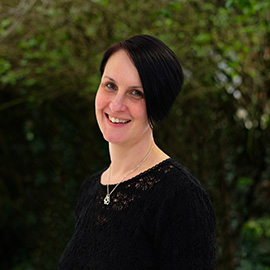Bridging, term and development finance: making property work harder

Property finance is busy. Many businesses are using assets on their balance sheet to raise capital, giving them more freedom to fund growth. With flexible terms now available – from 30-year facilities to short-term interest-only bridges – property is helping firms manage repayments, cash flow and expansion plans.
Why are more businesses using property to raise capital right now?
After a period of high interest rates, cash has become more expensive. Many firms are looking for ways to release funds without taking on long-term debt at high rates. Property is an obvious place to start. It can be used as security to access affordable finance and can be structured in a way that works for the business, not against it.
What’s the difference between a bridge loan, a term loan and a development loan?
- A bridge loan is a short-term facility, often used to buy or refinance property quickly before a sale or longer-term funding is arranged.
- A term loan is longer – typically five to 30 years – and gives stability for businesses planning around fixed monthly repayments. It is also important to note that the term is not for forever, we can refinance after a few years served, if it makes sense.
- A development loan funds construction or refurbishment projects, releasing money in stages as the build progresses.
Each has its place. The right choice depends on the purpose, timescale and exit route.
When does a bridge make sense – and when doesn’t it?
A bridge is ideal when time is tight – say a property purchase, auction buy or short-term cash need. It’s also useful when a sale or refinance is already in motion. But it’s not designed to be held for long. If the exit isn’t clear, the cost can start to outweigh the benefit. Most lenders do not like to refinance a bridge, but in the right circumstances it absolutely makes sense, as hiccups do come up and an extension for an additional few months can make a big difference to a client’s project.
How can long-term property finance help ease repayment pressure?
Some lenders are now offering terms of up to 30 years, with the option of interest-only periods. For trading businesses that can mean much lower monthly repayments and stronger cash flow. It allows owners to invest in growth without draining working capital each month.
What are lenders looking for when assessing property-backed funding?
They want to understand the asset, the value, the borrower’s experience and the plan for repayment. A clear exit strategy is essential for bridge and development finance, while affordability is key for term loans. A well-presented case from a broker can make all the difference to speed and approval.
How do flexible repayment options help cash flow?
Interest-only periods or staged drawdowns reduce strain on day-to-day cash. For example, a business could take a short-term bridge to buy or refinance, then switch to a longer-term facility once revenue improves. It’s about using finance to buy time and stability.
What are the main risks or costs to watch out for?
Rates are higher for short-term borrowing, so timing and exit planning matter. Development loans can also be complex if build costs rise or schedules slip. That’s where having an experienced broker helps – someone who understands both the deal and the lender. Working with the right broker, who understands the clients vision is key, as a lot of lenders like to take additional security on top of the security they are taking a charge over, again in the right circumstances, this would make sense, in most it absolutely does not, and this is where a good broker can work with the lender and negotiate. Clients also need to ensure they have some form of cash equity available; no lender will ever fund a 100%.
Where does a good broker add value?
Every business is different. A broker’s job is to find the right fit – not just the cheapest rate. At Evolve, we work with a wide panel of lenders, so we can compare bridge, term and development options side by side. We help clients see what’s possible and handle the detail so they can focus on running their business. We also ensure the facility is structured correctly for both client & lender. This is where working with the right lender is key as most would structure to benefit them and not the borrower. Property funding in whichever form, is a 2 way street, this is where we understand the clients needs, their visions and ensure that the client receives exactly the right support to allow them to thrive in whatever form they need.
Property can be a powerful way to free up funds, steady cash flow and move plans forward – but the structure has to be right.
If you’d like to talk through how bridging, term or development finance could work for your business, contact Stef Radymski or Nilima Begum for a chat.





